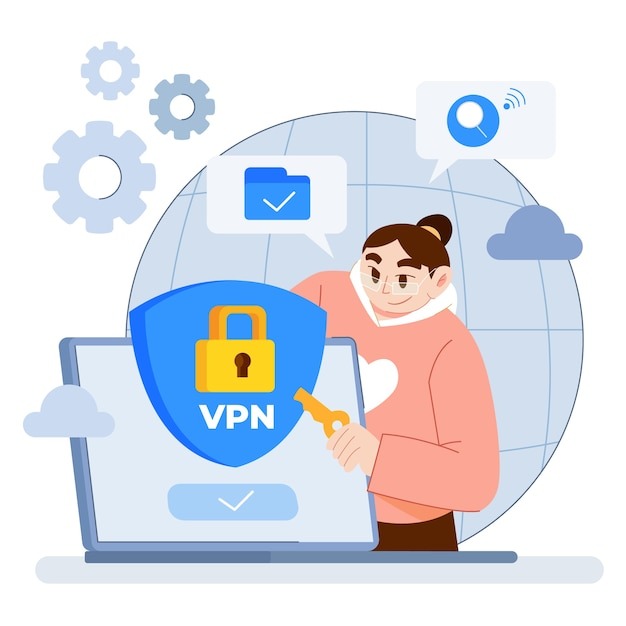In the realm of cybersecurity, maintaining secure browsing practices is non-negotiable. As an individual who frequently navigates through different networks and accesses a plethora of online content, I prioritize employing Virtual Private Networks (VPNs) to secure my browsing sessions. This article outlines my experience with VPNs and the steps I take to ensure my online activities remain private and protected.

Understanding VPNs
A VPN creates a secure tunnel for my internet traffic, encrypting my data and masking my IP address. This dual functionality allows me to browse the web more securely and access content normally restricted in my location. The increasing number of cyber threats has motivated me to adopt VPN usage as part of my daily routine.
Choosing the Right VPN
Selecting a trustworthy VPN provider is crucial in maintaining my online security. I consider several factors before making my choice:
-
Logging Policy: I only opt for no-logs VPNs. This means the provider doesn’t store my activity logs or metadata, further ensuring my privacy.
-
Security Features: I seek out advanced encryption protocols such as OpenVPN or WireGuard, which enhance the security of my data.
-
Server Locations: A wide range of servers in different countries allows me to bypass geographical restrictions effectively.
-
Speed and Performance: VPNs can slow down my connection; therefore, I focus on those that offer high-speed servers without compromising security.
-
Customer Support: Reliable customer service is vital for resolving any issues that arise during my usage.
By evaluating these features, I can confidently select a VPN that meets my requirements.
✅ Current deal: 🔥 Get NordVPN with up to 75% OFF! 🔥
Setting Up the VPN
Once I’ve chosen a VPN provider, the setup process is straightforward. I download the software compatible with my device—be it a laptop, tablet, or smartphone. The installation typically involves a few clicks, and I proceed to configure the settings. Here are the steps I follow:
-
Install the Application: I download the application from the official site or a trusted app store to ensure it’s authentic.
-
Register an Account: After installation, I create an account, which often requires a subscription.
-
Log In and Choose a Server: Once logged in, I select a server based on my needs—whether it’s to enhance security or access geo-blocked content.
-
Adjust Settings: I make necessary adjustments, such as enabling the kill switch, which disconnects my internet if the VPN drops, thus preventing exposure of my IP address.
-
Connect and Browse: After finalizing the settings, I click ‘connect’ and start browsing securely.
✅ Current deal: 🔥 Get NordVPN with up to 75% OFF! 🔥
Tips for Ensuring Secure Browsing with VPNs
Based on my experience, there are several best practices that I implement to maximize my VPN’s effectiveness and enhance my online security:
-
Always Connect Before Browsing: I ensure that my VPN is active before accessing any website to prevent unintentional data exposure.
-
Use Multi-Factor Authentication (MFA): Whenever possible, I enable MFA for my accounts to add an extra layer of security.
-
Regularly Change Passwords: I make it a habit to update my passwords periodically and use a password manager for generating complex credentials.
-
Avoid Free VPNs: While tempting, free VPNs often lack adequate security. I prefer investing in a reputable paid VPN service for better security.
-
Stay Updated: I consistently update my VPN client and other applications on my device to protect against vulnerabilities.
-
Be Cautious with Public Wi-Fi: I never access sensitive information while connected to public Wi-Fi networks unless my VPN is activated.
By adhering to these tips, my browsing remains secure, significantly reducing risks.
Evaluating Performance and Speed
One common concern I faced was the potential latency that VPNs could introduce. To address this, I run speed tests on different servers I connect to. I often experiment with servers close to my location for optimal performance. During this testing, I discovered that the choice of server can significantly impact my browsing speed and responsiveness.
I also pay close attention to how the VPN handles media streaming. Using services that involve heavy bandwidth can reveal the limitations of certain VPNs. In my experience, finding a balance between speed and security is key.
Regular Security Audits
A proactive approach to cybersecurity is essential for me. I conduct regular audits of my browsing habits and security settings. I regularly check for:
-
VPN Leaks: I utilize online tools to ensure my IP address is hidden and that DNS leaks are not exposing my activity.
-
Privacy Settings: I periodically review my VPN and browser privacy settings to ensure they adhere to the highest security standards.
-
Awareness of Phishing Attacks: I stay vigilant regarding phishing attempts by scrutinizing emails and links before engaging.
By regularly auditing my systems, I maintain a high security posture.
Conclusion
My commitment to secure browsing through VPN usage has become an integral part of my online activities. Following my structured approach—from selecting a reliable provider to implementing security practices—has empowered me to navigate the web with confidence. Remember, safeguarding your online presence is a continuous journey. By staying informed and proactive, anyone can enhance their browsing security effectively.
Incorporating a VPN into my browsing routine has significantly improved my online safety, allowing me to explore the internet while minimizing risks. With the tips provided, anyone can ensure secure browsing with VPNs and enjoy the internet without fear of exposure.
Affiliate Disclosure: By clicking on our links, we may earn commissions at no additional cost to you.